- Home
- Winston Groom
The Generals: Patton, MacArthur, Marshall, and the Winning of World War II Page 2
The Generals: Patton, MacArthur, Marshall, and the Winning of World War II Read online
Page 2
Then Marshall reascended his tree. “Climbing up was the hardest thing and I didn’t even have on sneakers,” Marshall remembered. But he had only just resumed his sawing when the phone rang again. It was the same officer he had told to fly to Hyde Park to consult with Roosevelt, who had several questions about what he was to tell the president.
That having been dealt with, “I went back up the tree,” Marshall said, when the phone rang once more. This time it was President Roosevelt himself, who had some questions of his own. “So I climbed down out of the tree and went back to the house and got on the telephone and explained the situation and recommended the action I thought ought to be taken,” Marshall said. “Then I went back to my peaceful occupation up the tree,” though by this time he was “a little run down.”
He was not there long, however, when President Roosevelt “thought of something further, and I had to come down out of the tree again.” This time—following his fourth descension of the tree—he gave up, changed his clothes, got into his car, and drove to the office.1
This, and situations like it, are the enduring fate of the staff man. It takes a personality of inordinate composure and equanimity to handle the constant vicissitudes of making decisions that have consequences both grave and great, even while you’re up a tree.
The outcome of the story was rewarding, however. Roosevelt okayed Marshall’s message to Queen Wilhelmina, who herself okayed the establishment of U.S. artillery batteries on Aruba and Curaçao. The batteries arrived and got set up, Marshall said, the very evening before a German submarine surfaced and opened fire on the large refinery on Aruba. But the response from the American 155mm batteries was enough to drive it away, and the refineries continued to supply oil to the United States and other Allies.
Incidentally, Marshall said, he once told the story of the artillery batteries and the tree to England’s King George while having dinner with Winston Churchill in the bombproof cellar of number 10 Downing Street. It “struck the king as very funny,” Marshall said, and on those frequent occasions when the two men were again found in each other’s company, King George would always ask Marshall to retell the ordeal of the tree for the amusement of other guests.
GEORGE CATLETT MARSHALL JR. was born on New Year’s Eve, 1880. He was ushered into the so-called Gilded Age, the Gay Nineties, “la belle époque” of citizens riding around on bicycles with enormous front wheels and of barbershop quartets; when men wore mustaches instead of beards and parted their hair in the middle, and women wore floor-sweeping dresses with bustles and twisted the hair on their heads into buns.
The great American Civil War had been over now for a quarter century, and many of the old animosities between North and South had mostly faded. By then the United States was the most prosperous nation in the world, producing vast amounts of iron, steel, and other manufactured goods and commodities, including a huge trade surplus of food grown on farms in the Midwest. This was the America of muscle, of strong trade, of Irish, Welsh, and continental European immigrants teeming into the country to work for the railroads, steel mills, and shipyards. They worked for men like young George Marshall’s father, who was involved in the iron and steel industry, but lest we get ahead of ourselves, let’s take time now to visit the vestiges of the Marshall clan. In America at least, it traces as far back as the year 1650, when an Irish Anglican cavalier named Captain John Marshall landed at Jamestown, Virginia, to escape the tyranny of Oliver Cromwell and his Roundheads.
These worthies included a namesake—the eminent Chief Justice of the United States John Marshall—as well as, down through the ages, a productive gaggle of Revolutionary War heroes, lawyers, preachers, planters, doctors, congressmen, surveyors, ambassadors, military officers, and others a cut above average. Somewhere around the end of the eighteenth century the Marshall line abandoned Virginia for the fertile and lightly settled lands across the Appalachians in Kentucky—just as it became the fifteenth state in the Union.
There, in the port town of Augusta on the Ohio River, they prospered in mercantile trade, the law, and politics, constructing, in due time, a substantial three-story, sixteen-room brick residence that came close to being a mansion. When the Civil War came to a divided Kentucky in 1862, George Catlett Marshall Sr. was a sixteen-year-old member of the Augusta Home Guard, sworn to uphold the Union cause, while his two older brothers were away serving in the Confederate Army.
On September 27, 1862, a Saturday, forces under the Rebel general Basil Duke appeared on a hill south of Augusta. Duke used his artillery to disperse two Federal gunboats, and then marched his 450 cavalrymen down the town’s main street. The commander of the outnumbered Home Guard, which consisted of only one hundred men and no artillery, raised a white flag. Scattered in houses and buildings, most of the guard did not see it and opened fire on the Southern soldiers.
In the ensuing fight some seventeen Confederates and seven Home Guardsmen were killed, and a number on both sides wounded. The Home Guard eventually surrendered and it became but one of hundreds of such skirmishes that marked the backwaters of the war in the Border States, where brothers truly fought brothers and the calamity was profound. Years later Marshall remembered that General Duke himself, a Kentuckian, was also a relative, and family lore had it that after the fighting was over he came to the door of the Marshall home to see if everyone was all right.
When the war ended Marshall Sr. was nineteen and engaged to Laura Emily Bradford, daughter of the town doctor who had commanded (and surrendered) the august Home Guard to General Duke. Young Marshall, seeking his fortune as a merchant, had, it seems, begun at the wrong time. Railroads were quickly surpassing riverboats in carrying the nation’s trade, and Augusta was fast declining as a center of commerce. Through a relative, he got wind of a clerkship at an ironworks in a small town in Pennsylvania called Dunbar, which was in the shadow of the Alleghenies about forty miles south of Pittsburgh.
Once at the Dunbar Iron Company, Marshall Sr. had no intention of making a career out of being a clerk. The earth of western Pennsylvania was already yielding great fortunes for hearty go-getters such as John D. Rockefeller and his Standard Oil Company and the iron and steel works of Andrew Carnegie and his partner Henry Clay Frick. After the Civil War there was a rapid expansion of railroads, metal ship hulls, iron bridges, and girder-built constructions that allowed the building of structures many stories high instead of just three or four. In turn, there became an insatiable demand for forged metals and the processes that created them.
One such process produced coke, a pure-burning fuel with a high carbon content derived from cooking coal in an oven at high temperatures until it forms a hard, gray, porous solid block of ash. The coke was then used to fuel the thousands of “beehive” coke ovens† that dotted the countryside of Pittsburgh and its environs, for the furnaces of Carnegie and others ran night and day. Marshall Sr. had been at the Dunbar Ironworks a little more than a year when he teamed with a young bookkeeper from Alabama named Arthur W. Bliss to form a company that manufactured the firebricks with which to build beehive ovens. By 1872 it was reported that “Bliss, Marshall & Company was producing seven thousand brick a day—the beginning of a solid business with wealth perhaps ahead.”2
Meanwhile, Marshall returned to Augusta to marry his fiancée, Laura Bradford, in a society wedding reported in the Cincinnati newspapers. The following year she gave birth to a child and the Marshalls moved from Dunbar. They settled eight miles south in Uniontown, a small city of thirty-five hundred, which sat on the enormous Connellsville vein of coal and was bisected by a watercourse with the unappealing name Coal Lick Run. Founded in 1776, Uniontown had been a stagecoach stop on the old National Road that ran across the mountains. Its history dates back to the French and Indian War and George Washington’s surrender of Fort Necessity to the French.
In due time Marshall and Bliss branched into the coke-producing business, operating their own coke ovens as well as selling lump coal from a mining operation. Not even the d
epression of 1873 could stop them, and by the middle of that decade Bliss and Marshall expanded dramatically, buying a mining company as well as coalfields. In 1880, the year George Jr. was born, his father was named company president.
Marshall Sr. was a gregarious and friendly personality in Uniontown, where he joined the Masons and the Democratic Party, despite the fact that Democrats were a decided minority in Pennsylvania. He was proud of his family’s history, especially its connection, however tenuous, with Justice John Marshall (a distant cousin). He was scandalized when young George, given a copy of the family genealogy, discovered (and went about telling anyone who would listen) that a Marshall ancestor in the early eighteenth century had married the pirate Blackbeard—the infamous Edward Teach who was beheaded by the British in 1718.
Growing up, the young boy made frequent trips back to the family place in Augusta, Kentucky, where there was a flock of cousins to play with and hideouts and haunts along the tall bluffs of the Ohio that one writer described as “reminiscent of stretches of the Rhine.”3 Here, where the Marshalls had lived for generations, they were gentry, but back in Uniontown the Marshalls were not readily accepted by some of the older families “that dated back almost to George Washington’s day.” There remained in northern states such as Pennsylvania—as it did in the South—vestiges of the old sectional animosities and mistrust. As Marshall recalled long afterward, “Father came up from the South; Mother came up from the South,” and so, “for a long time,” it was mostly the newer residents of Uniontown whom the Marshalls associated with.
But it was the picturesque Uniontown that was formative in the boy’s life, where he spent his childhood hunting quail and grouse in the mountains with his father and fishing for bass and pike on rock-ledged icy rivers. At night his mother would read to the family, by fireside in the cooler months and outside on the wide veranda in summer—mainly, Marshall remembered, the Sir Walter Scott romances such as Ivanhoe. Later, when her eyesight began to fail, she had to hand over the reading duties to George’s father, who favored all the James Fenimore Cooper stories and a long saga by Arthur Conan Doyle called The Refugees.
At Miss Thompson’s School, and away from his literary parents, young George Jr. was a mostly indifferent student, except on Sunday school picnics where they would churn ice cream. In winter there was skating on frozen ponds, sledding, and sleigh rides bundled in straw, and at Christmas a large tree in the dining room lit by candles on its branches just before daylight. On the Fourth of July George took out “several cigar boxes full of firecrackers and rockets.” His nickname was “Flicker,” because of his sandy hair.
Alongside his brother and sister, George would sit by the fireside while his father read, opening hickory nuts with a hammer “for mother’s very famous hickory nut cake.” “I always liked our fires,” he said, “because we had what was called cannel coal and it made a soft, delightful homelike flame … and it was very agreeable to sit in front of. Later on,” he remembered, “when natural gas was piped in, the fireplace lost a great deal of its charm.”
As he grew older the boy became a keen entrepreneur. At the age of ten, with his friend Andy Thompson, he opened a greenhouse and florist shop, selling flowers to the schoolgirls for a penny—until, that is, the girls discovered that they were not actually growing the flowers themselves, but combing the countryside around Uniontown for them. The girls insisted that they shouldn’t be charged for things that were free and the business collapsed. Next the pair set up shop in the basement of the Marshalls’ house selling homemade corn silk cigars and root beer—until the elder Marshall discovered that the enterprise involved selling his own root beer, which he had put into the cellar to age. The illicit funds gleaned from this enterprise were spent at the corner drugstore on penny thrillers and licorice sticks.
After this, the two began a clandestine venture raising fighting chickens—clandestine because cockfighting was illegal in most of the United States. They raised Red Bantams with eggs ordered from Georgia and had an older friend enter them into the fights. But later, when they went to the pits to see their birds fight, the affair was raided by the sheriff and the two barely escaped capture and arrest.
Once he and Andy scooped out a canal on Coal Lick Creek that ran behind George’s house and filled it with “The Great Pacific Fleet,” made of matchbox battleships with matchstick masts, after the same powerful naval squadron Admiral George Dewey would later command when it sank the Spanish fleet in Manila harbor during the Spanish-American War. Soon this became the exhibit of the neighborhood.
So the boy’s life was idyllic, more or less, in a Tom Sawyerish way.
In his teens George was athletically inclined but, in his own words, “not very talented.” He played football and baseball with his school’s teams, developed unsuccessful crushes on several girls, and remained lackadaisical in his scholarship. He grew to be more than six feet tall and gangly, but with a handsome face, probing eyes, and a rather stern countenance except on those infrequent occasions when he smiled, which gave him a warm and comforting expression.
In 1890 the Marshalls’ world changed dramatically. To consolidate operations, Marshall Sr. and his partners had decided to sell most of their coke and coal holdings to Henry Clay Frick, who was busy creating a monopoly in that part of Pennsylvania. Against the advice of his wife, Marshall Sr. put practically all the proceeds of his part of the sale—approximately $150,000‡—into a resort land company in Virginia’s Shenandoah Valley. When it went sour later that year with the crash of 1890 and the ensuing depression, not only did Marshall lose his investment, as president of the company he had obligated himself for all its debts and he lost his savings as well. Ultimately Marshall Sr. was forced into bankruptcy and the family very suddenly went from comfortable affluence to having practically no money at all.
The boy’s mother had been left some rental properties in Philadelphia and lots in Augusta that contributed a relatively small amount to the family income, and his father still retained an interest in several smaller businesses connected with the coal and iron industries. But financially it was a strain. George suddenly found himself in public school instead of the fashionable Miss Thompson’s. Fifty years later he put it bluntly: “The years of my boyhood, from the 1890 crash until I went away to school, were very limited financially, and only my mother’s modest income from some property she still held in Pittsburgh saved the situation … We had to economize very bitterly.”4
But it was far more than money his mother brought to the boy. Character often springs from diverse, hidden sources, and if you believe in such things as ancestry and breeding that might account for some of it—yet as the years passed there was much, much more. It had become increasingly evident, says Marshall’s biographer William Frye, that young George Marshall “had his mother’s reserve, her great dignity, her steadiness, the same profound moral integrity, tempered perhaps by some of his father’s easy manner and that indefinable quality that gentlefolk call presence.”5
America in the 1890s was characterized by the financial crash at the beginning of the decade and the subsequent depression and recovery; industrial labor upheavals; and the Spanish-American War of 1898. As we have seen, the financial crash created a great burden on Marshall’s teenage years, though he seemed stoic about it, remarking later, “Every boy in a democracy should attend, at least for a period of time, a public school.”
The labor troubles were just then turning deadly, with bitter strikes in the mining and railroad industries; beatings and killings were frequent and often the army, state militia, or National Guard was called upon to keep labor unions at bay. In the previous decade there had been an estimated twenty-four thousand strikes and lockouts; with all the coal mining around Uniontown, Marshall was smack in the midst of the ugliness. In fact, one of his father’s business partners was assassinated by the Molly McGuires, a violent secret society that used murder, arson, and kidnapping to intimidate mine and mill owners and other capitalists. The senio
r Marshall was likewise on the Mollies’ “black list,” according to George, but somehow escaped harm. As for George himself, he was once struck in the head by a lump of coal thrown by an angry striking miner. Later in life, Marshall noted that miners rarely joined the army, since they considered U.S. soldiers as a kind of enemy.
In those times youngsters often went to college at the age of sixteen, sometimes earlier. Both George’s brother, Stuart, five years older, and his sister, Marie, four years older, were away at school, money having been put aside for this by the elder Marshall before the crash and his financial ruin. George wasn’t so lucky. He wanted to attend West Point both because he fancied a military career and because it was free. Unfortunately, his district’s congressman was a Republican—as were both of Pennsylvania’s senators—and Marshall Sr.’s prominent affiliation with the Democratic Party spoiled that notion. The next best thing was the Virginia Military Institute, where brother Stuart was in his senior year and where generations of the Virginia Marshalls had received their education.
What made George most keen to attend VMI was a conversation he surreptitiously overheard between his mother and his brother, who had been home on leave from the institute. Because of George’s mediocre grades in high school, Stuart urged his mother not to send him to VMI for fear of disgracing the family name. The incident had such a profound effect on Marshall that he remembered it vividly in his later years, saying that it motivated him more “than all the instructors, parental pressure, or anything else,” and “had a psychological effect” on his entire career.
Passing the entrance exam to VMI was dictated in large measure on whether or not the school’s superintendent, General Scott Shipp, liked the applicant. Shipp, known as a straitlaced but kindly man, had been at VMI for nearly forty years. As commandant during the Civil War, he had led the school’s corps of cadets, and he was wounded in its celebrated charge against the Union line during the Battle of New Market in 1864. Fortunately for George, the Marshall name in Virginia lay very high in the estimation of General Shipp, and the fact that George’s brother had excelled at VMI also prepared the road for his acceptance. For reasons that remain inexplicable, George took easily to the harsh military life of the academy; in fact, he thrived in it.

 El Paso
El Paso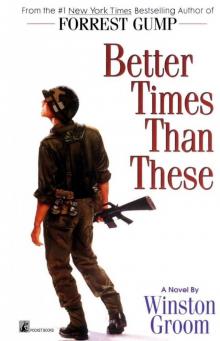 Better Times Than These
Better Times Than These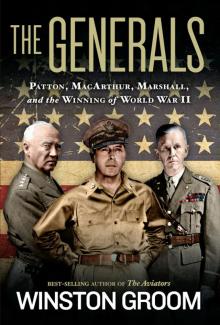 The Generals
The Generals 1942: The Year That Tried Men's Souls
1942: The Year That Tried Men's Souls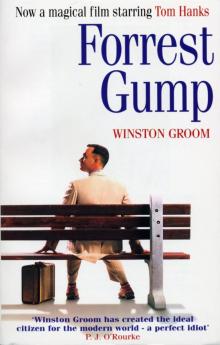 Forrest Gump
Forrest Gump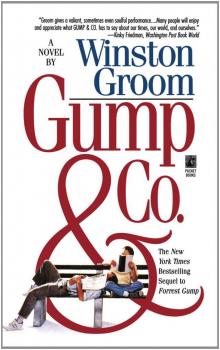 Gump and Co.
Gump and Co.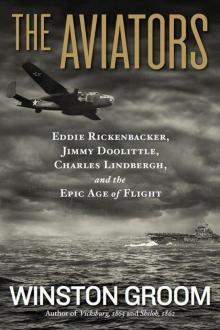 The Aviators
The Aviators Shrouds of Glory
Shrouds of Glory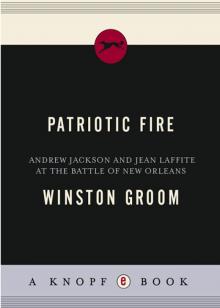 Patriotic Fire
Patriotic Fire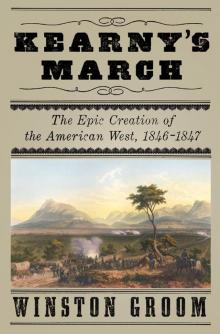 Kearny's March
Kearny's March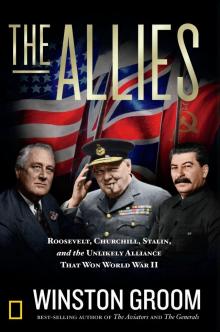 The Allies
The Allies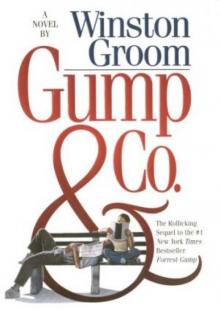 Gump & Company fg-2
Gump & Company fg-2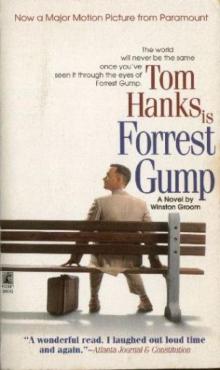 Forrest Gump fg-1
Forrest Gump fg-1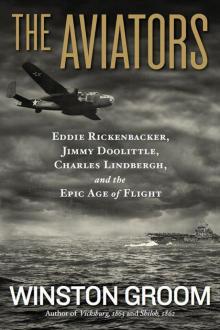 The Aviators: Eddie Rickenbacker, Jimmy Doolittle, Charles Lindbergh, and the Epic Age of Flight
The Aviators: Eddie Rickenbacker, Jimmy Doolittle, Charles Lindbergh, and the Epic Age of Flight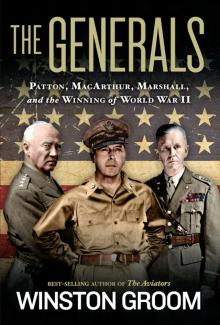 The Generals: Patton, MacArthur, Marshall, and the Winning of World War II
The Generals: Patton, MacArthur, Marshall, and the Winning of World War II